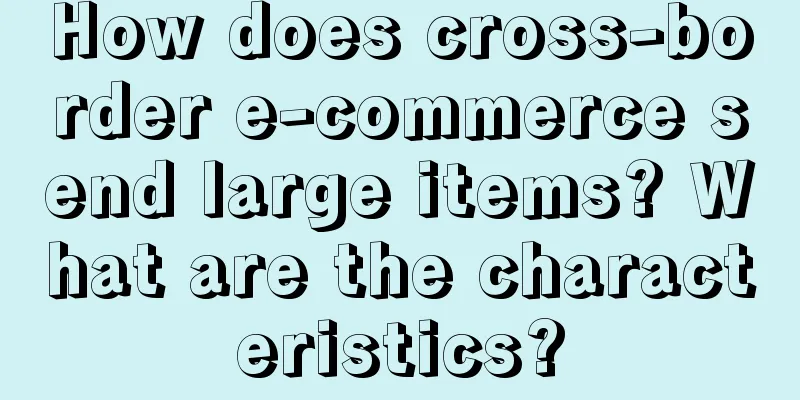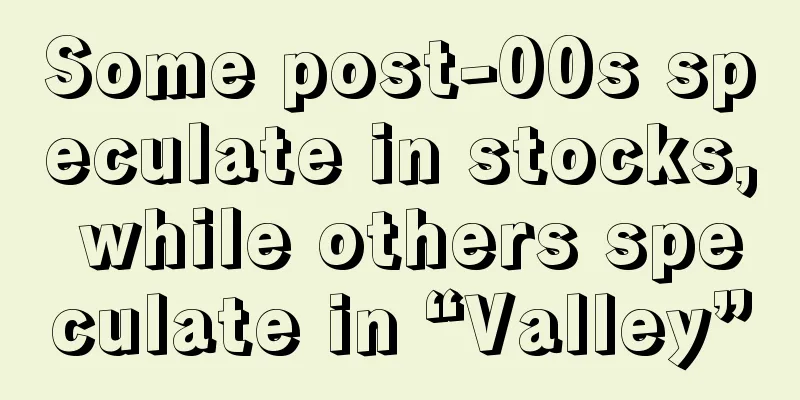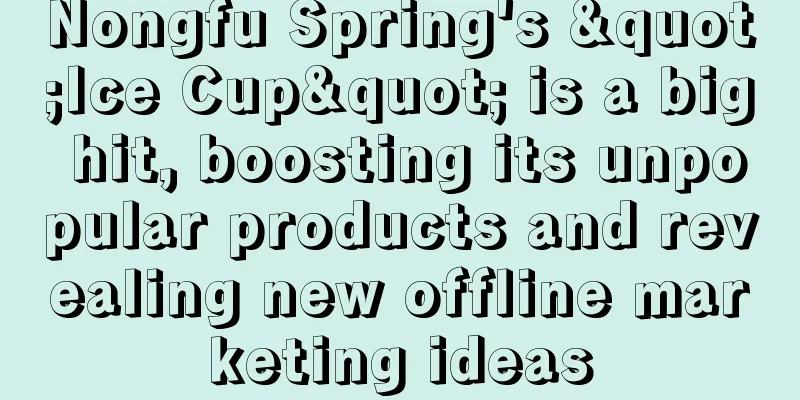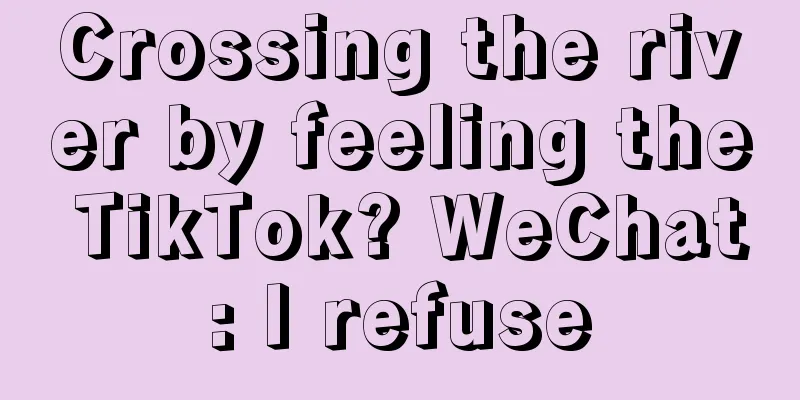Co-creation - Re-understanding the brand: Hamlet, the Ship of Theseus and For the Tribe (2)
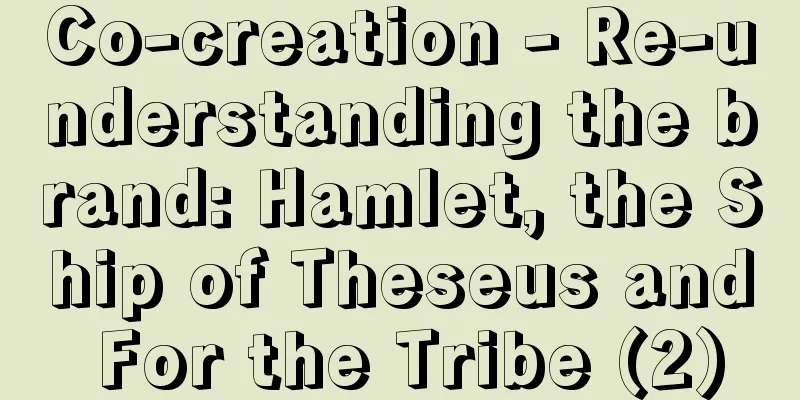
After centuries of reincarnation and exploration by countless great brand thinkers, we seem to have got the answer to what a brand is. Is a brand a logo? Is a brand a symbol? Is a brand a promise? Is a brand an image? Is a brand a symbol? Is a brand an asset? Is a brand an attitude? Is a brand a belief? Is a brand an emotion? Is a brand a relationship? Is a brand a cognition? Is a brand a mental imprint? Is a brand a lifestyle? Is a brand an ecosystem? ... ? All of these statements may be correct, but if we accept the above statements, is the brand really a "symbol", "promise", "image", "relationship", "lifestyle" and "ecosystem"? This chapter is divided into four parts, which discuss "What is a brand?" and "How to brand?" from the perspective of brand creators:
1. What is a brand? ——1000 “Hamlets”
After studying the thoughts of brand scholars, marketing experts, and advertisers in Chapter 1, let’s take a look at the understanding of brands by the creators of great brands and cognitive entrepreneurs in the digital age. 1. 10 creators of great brands that "changed the world"(1) NiKE founder Phil Knight during the lawsuit with Onitsuka Tiger in 1975:
(2) Howard Schultz, the founder of Starbucks, wrote in his company mission statement in 1988:
(3) Steve Jobs, founder of Apple
(4) Amazon founder Jeff Bezos (2001 letter to shareholders)
(5) Nadella, the third CEO who led Microsoft to regain its glory (2014 letter to employees)
(6) Suzuki Toshifumi , Masuda Muneaki, Tsutsumi Seiji
(7) Ivan Chouinard, founder of Patagonia
In their view, a brand can be a kind of culture, spirit, or concept; or a means to inspire energy and help others. Ultimately, a brand is a tool to lead everyone to create beauty and change the world. 2. 6 European and American DTC brand founders who were born digital(1) John Foley, founder of Peloton
(2) Laura, founder of Seed Beauty
(3) Allbirds founders Tim Brown and Joey Zwillinger
(4) Andrew Dudum, founder of Hims
(5)Zak, founder of Dirty Lemon
(6) Away, founder of Away
3. 14 Chinese entrepreneurs who are not alone in their pursuit of successOr take a look at what the ambitious unicorns or Chinese brand creators are saying about themselves that they are changing the world. If you put them together with resource-based entrepreneurs, they seem out of place. But when you put them alongside those great founders and DTC brand entrepreneurs, you’ll find that they are different yet harmonious, unique yet not lonely.
(Note: The above is compiled based on the interview content of Content Brand Planet) Brand Ape believes that most of the leaders, supervisors and founders of these brands have not read the theories of the previous brand thinkers. They rely on their keen perception and profound insight to define the brand in their own way and brand their own brands with their own imagination. They shifted their focus from things to people; they strived to be different rather than better; they did not think about solving existing problems, but about creating new value and opening up a new world; they desired not only to make money and continue to grow, but also to fulfill their social responsibilities, change the world or express themselves. In their hands, brands are evolving from logos/assets, personality/culture to attitude/belief; the creation logic is evolving from eyeballs to eyes, from making beautiful things to finding like-minded people, from conveying ideas to exploring life to creating a better future together. At this moment, do you still think that the brand is a "symbol", "promise", "image", "relationship", "lifestyle" or "ecosystem"? 2. So, what is a brand? ——Rethinking about brands
Since there is no right or wrong in 1,000 "Hamlets", why do we need to give a "definite" definition to the brand? Two thoughts: " one thought " and " Occam's razor " .
Starting from this point, we can find the origin and essence of the "brand", and then we can easily come up with the "branding" methods such as image, positioning and super symbols, such as the sword demon Dugu Qiubai in "The Return of the Condor Heroes": "After the age of forty, I was not attached to things. Grass, wood, bamboo and stone could all be used as swords. From then on, I practiced diligently and gradually reached the state where swordlessness was better than swords." Now, let's stop our steps, stand on the shoulders of countless giants, step out of the matter again, and return to the starting point to see if we can give a simplified and concise definition of the shaved "brand", which I hope will be inspiring to you and your business. Brand Ape gives three progressive and independent brand definitions. 1. Brand is “personal perception”In The Brand Chasm, Marty Neumeier argues that brand is a personal intuition . Let us continue this line of thought from Descartes' "I think I am", Schopenhauer's "The world is my will", and Berkeley's "Things are collections of ideas and existence is perception". A more strategic definition may be: Brand is "personal perception" - that is, a person's "perception" of a certain product, service or company!
From this, we get the first BIG conclusion: users are the protagonists of the brand, the masters of the story, and the center of the picture! For brand creation, three cognitions need to be refreshed:
This is the underlying understanding of the "co-creation and sharing" mentality with users. 2. Brand is a kind of "collective imagination""Ship of Theseus Paradox": A ship can sail on the sea for hundreds of years, and as long as a plank rots, the plank will be replaced. So the question is, if all the parts of the ship were replaced, would the resulting ship still be the original Ship of Theseus, or a completely different ship? Peugeot is a good example of isomorphism. This century-old brand has changed its founder, company owner, suppliers, products, and even its philosophy, culture and values. So is this brand still the same brand? In "Sapiens: A Brief History of Humankind", Yuval Noah Harari believes that the domination of the earth by Homo sapiens began with the cognitive revolution, from "beware of lions" to "lions are our guardian angels" , an imagined/fictional story together. The key point is not to have this "imagination" but "together". A brand is a kind of "collective imagination" - that is, using a concept that is commonly recognized by society to identify a specific thing.
The second BIG conclusion - a brand is not created by you, but is collectively imagined and co-created by stakeholders. The branding method extended from this can be explained in more detail:
The words "enough perceptions" and "collective imagination" show that the brand was created by "us" together! 3. Brand is a sense of belonging and community identity!Let us continue to search for the ultimate holy grail of brand definition from tribes, religions, psychologists, thousand-year-old families, and century-old clubs. (1) “For the tribe”: cohesion and belonging
Most of the civilizations in human history developed from small tribes, such as Fayum, Ubaid, Yanhuang... When these prehistoric tribes had beliefs, had members to belong to, and formed their own culture, the Egyptian civilization, Sumerian civilization, and Chinese civilization emerged. Studying modern Aboriginal tribes can provide a glimpse into this history. For example, why do Indian tribes and Australian Aborigines have such cohesion that has lasted for thousands of years: they divide ethnic groups by tribes, and every member of each tribe knows how to use unique tribal symbols: dance, language, visual and auditory symbols, mythological totems. In this way, they distinguish their own tribe from other tribes, while also showing their own characteristics to people from other tribes, creating an emotional difference and a sense of belonging to a lifestyle. These tribal symbols, characteristics, distinctions, and meanings are all designed to make people in the tribe feel a sense of belonging and grow together with the tribe. The same is true for religion. There are many different beliefs in the world. They all believe that their beliefs are special and feel strongly that they can communicate with the "God" in their hearts. What is important is that in this community they care about each other, commit to each other, and are connected to each other. Yes and it is true, a highly cohesive, meaningful tribe & religion can be understood as a brand. (2) Collective subconsciousness and group identity Let’s look at psychologists’ research on “sense of belonging”. Jung believed that:
It’s really brain-burning. To put it simply: a sense of belonging is the most basic and essential need and driving force of human beings! Maslow's hierarchy of needs is easier to understand: he ranks belongingness as the third level - everyone wants mutual relationships and care. Because emotional needs are more detailed than physiological needs, they are related to a person's physical characteristics, experience, education and religious beliefs. Therefore, people create " communities " in which they can participate: thousand-year-old families, hundred-year-old clubs, various political groups, organizations, associations, communities... where they can become someone, feel as if they belong to them, and of course they can also distinguish themselves from others - without boundaries, there is no sense of security. (3) New “tribal & religious” community identity – brand If we extend the concept of tribe and religion to the modern era, a brand is a new kind of community: a tribe with faith, a religion of mutual relationships and care, a family/club of mutual achievement. Wally Olins, an international branding guru and corporate identity expert, who is described by the Financial Times as a leader in branding and identity, expressed it most accurately: "Branding, at its core, reflects the human condition. It ultimately represents a sense of belonging: expressing that humans belong to a tribe, a religion, or a family." Therefore, a brand is a sense of belonging and community identity. On the contrary, without a sense of belonging and the "symbols", "commitments", "image", "relationships", "lifestyles" and "ecosystems" that are recognized by the community, it cannot be said that one owns a brand. In reality, many of our daily conversations essentially revolve around a sense of belonging: Are we born in the 80s or 90s? Are we new middle class or working class? Are we running marathons or doing yoga? After these lifestyle segments are combined with brands, they are dynamically transformed into different communities. Mercedes-Benz or Tesla? Apple or Xiaomi? Nike or Li Ning? Dell or Huawei? Starbucks or Luckin? Another way of understanding it is that the concepts we have built around Nike, Coca-Cola, Apple, and Xiaomi are to create a certain emotion to satisfy a sense of belonging among human beings. When Nike says “Just do it” and Apple says “Think Different”, it’s like they’re peering into my soul. At least some users will think that since they know me so well, the shoes and computers may be good, and then willingly join these groups. The difference is that the "tribes" established by the brand will be based on purchase status. You can join any number of groups at any time, giving you a sense of belonging beyond yourself. You also have to know that the sense of belonging to a brand tribe can be powerful, even dangerously powerful. As you and I have seen, Harley-Davidson fans travel thousands of miles to gather, Apple fans queue up all night to buy new products, the LEGO Super Players Global Exhibition, Xiaomi's Mi Fans Festival and NIO DAY all show that the sense of belonging is powerful and dangerous. Sometimes it makes us feel that the world has become smaller and more comfortable, but it is difficult to see the wider world. The third BIG conclusion: Creating a brand is about creating beliefs and forming a sense of belonging. A more radical conclusion is that it is no longer the companies that own the brands, but the users who derive meaning from the brands and communities; future competition will no longer be between companies, but between communities and values between concepts. When you recognize that the essence of a brand is a sense of belonging, then the question is, how to form a sense of belonging and community identity?
All of this seems to be easier to achieve in the era of mobile Internet: digital technology not only eliminates geographical boundaries, allowing tribes to be large in scale, but more importantly, tribes can become more diverse - small, influential, horizontal, vertical, cross-cutting, three-dimensional, temporal, and even unheard of.
Finally, please ask yourself, if rational people like us also desire to find our own "tribe and religion" , hoping that this deep relationship can support ourselves, protect ourselves, define ourselves, and help us understand this complex but unstoppable world. 4. Now, let’s rethink the brand8,000 words later, the simplified & concise brand definition is here. The so-called brand is personal perception, group imagination and a sense of belonging. Hahaha, now it’s very simple when I explain it in detail. 3. Where is the boundary of the brand? ——One truth and five facts
1. One truth about brands – infinite gamesLet’s first look at a short evolutionary story.
However, before the evolutionary mutation, there is another evolutionary perspective:
They all point to the way of all things: "Evolution for survival, evolution for life" . So, is the truth of brand also understood : (1) Necessary evolution: heredity x inheritance In the past 20 years, traditional brands and advertising have been heading towards a death spiral. The new era has spawned many new brand ideas, whether they are futurists, innovation scholars or cutting-edge masters, whether redefining or innovating methods: digital brands, DTC brands, lifestyle brands, new consumer brands, long-termism; explosive products, long tail, experience, scenes, peaks, circles, traffic pools, IPization, sense of participation, all of which are the integration and practice of original classic brands, advertising and marketing over the years. In the view of Brand Ape, as the pace of change accelerates, the market environment becomes more differentiated and conflicting, deconstruction and flow will become increasingly complex, and we need to look back and draw strength from the underlying concepts of some brands and brand theories. Just like the brand "differentiation" strategy, from early identification and differentiation, category differentiation to mental resources, from blue ocean strategy, cultural strategy, to Apple's "extraordinary" and "MUJI" philosophy, the essence is difference and differentiation. Anyone who abandons those original classic brand management ideas would be wrong, and anyone who ignores this change would be foolish. Therefore, every brand person still needs to read those classics "Confessions of an Advertiser", "Marketing Management", "Positioning", "Source of Brand", "Blue Ocean Strategy", "Brand Master", "From Good to Great", "Once Upon a Time" and so on. (2) Continuous Evolution: Variation X Innovation However, what is even more unfortunate is that we have experienced the tremendous impact of digitalization and artificial intelligence on everyone and even every time and space. We have experienced a new upgrade in individual needs and dramatic changes in each role, but the underlying logic of most Chinese advertising and marketing companies is still lingering in history: identification, positioning, categories, symbols... Every brand person is aware of the impact of this change and cannot deny the disruptive nature of this change, but is still immersed in the changes in brand concepts and marketing routines, and few people think about: Should the underlying logic of the brand evolve today? At this time, we should explore new brand ideas and collect and refine brand principles that can better reflect changes and constancy from the deep thoughts and extensive practices of cognitive entrepreneurs, a new generation of marketers, and brand explorers in order to face greater changes in the future. Tribute to two great masters, Aaker and Kotler, who, even at the age of 80+, still upgraded their concepts:
▲The picture shows the cover of Marketing Management over the years Like the evolution of the eyes, brand thinking needs to survive in the DNA of our predecessors; more importantly, like a mutant giraffe, brand awareness must continue to evolve and change, otherwise even a powerful dinosaur cannot escape the fate of extinction. This is a game with the purpose of continuing the game. This is a game without boundaries and infinity! 2. Five more truths you need to know about brands!Truth 1: "Your perception of a brand determines its success and future." There is a saying that "the founder's cognitive boundaries determine the company's development boundaries"; an isomorphic sentence pattern is "your perception of the brand determines your brand's achievements and future." Therefore, the future of your brand is not determined by a strategy company, marketing company, brand company, or design company, but by you. Truth 2: No successful brand is created by a single theory alone. Think about it, those theories that claim to have won the market by relying on UPS, BI, positioning, and super symbols, have they really created a brand by relying on a selling point, a packaging, an IP, or a category positioning? Truth 3: A brand theory that suits you is a good theory. Most of the time, when every marketing and brand expert and advertiser talks about brands, they are demonstrating a brand thinking method that they understand. There is no right or wrong. The key lies in whether it is suitable for the current brand, its position, and the market it faces. The super symbol of H&H can make Mixue Bingcheng successful, but it can never make HEYTEA, MANNER and SANDUNBAN successful. Truth 4: "The winner takes it all" and "the last one standing takes it all" can both prove that you are right. One truth about brands is that brands work in different ways; another truth about brands is that whoever succeeds is the truth! Luckin Coffee, which nearly went bankrupt, really became a king in 2022, with revenue exceeding 10 billion for the first time and overall operating profit turning from loss to profit for the first time. Truth 5: The success or failure of a business is its own business; brand companies are only responsible for collecting money and doing the work. Look at Hua & Hua's sobriety:
4. Branding in the Digital Age: From a sense of participation to a sense of co-creationTaking into account the different times, media progress, and cognitive upgrades, branding can be roughly divided into five stages: 1. Industrial and commercial era (before 1950s)Methodology: Branding centered on brand identity – Branding = naming + logo design + image building. Performance: CI/CIS major banks; Marlboro’s cowboy, Michelin’s tire man, etc. 2. The era of mass communication (1950s-1990s)Methodology: Communication-centered branding - brand creativity + positioning + vigorous communication (brand = famous brand). Performance: Advertising and positioning are king; Coca-Cola, Procter & Gamble, and McDonald's advertise heavily, and Avis Taxi is positioned; in China, there are CCTV bid winners Qinchi, BBK, and Wahaha, followed by Melatonin, Wong Lo Kat, and Xiangpiaopiao. 3. PC Internet Era (1995-2010)Methodology: Customer relationship-centered branding - strengthening customer relationships + customer experience + innovating customer value. Performance: The rise of relationships and memberships . Tsutaya Books (2003), Amazon Prime (2005), Lego Ambassadors and Super Players (2005), Starbucks Rewards (2008), MUJI, Haidilao, etc. 4. Digital Age (2010-2018)Methodology: Branding centered on user participation—experience + scenario + sense of participation + private domain. After 2010, as mentioned above, digitalization has greatly changed the way of creating brands. The customer relationship of the past has become more, and connection-interaction-participation-immersion has shown its due power. Performance: Xiaomi’s sense of participation (2010), Aranya Lifestyle Community (2013), NIO Super Membership (2014), and of course those inherently digital DTC brands and innovative new consumer brands. 5. The Digital Age (2020 - ) is a natural leap from participation to co-creation!2020 NFT is here; 2021 web3 and metaverse are here; 2023 ChatPPT is here. Methodology: Focusing on co-creation and sharing—New Community + Ecological Alliance + DAO Community +… Performance: Bilibili, Douyin/Kuaishou, Xiaohongshu’s rise; Nike’s DTC strategy, Lululemon “lululemon Studio” membership plan, Starbucks Othello plan, etc.
All past is the overture. To achieve branding through co-creation and sharing is not only a trend, but also requires exploration; not only innovation, but also in-depth; it is no longer a theory, but also practice. Because we believe that trends, innovations and theories are not studied, but are told, acted, promoted and created together by a group of people who have keenly and sensitively captured it. Reference article: Brand Planet "Why do you build a brand?" Reference books: "A Brief History of Brand Thought", "Brand Divide" Author: Brand Yuan, WeChat public account: Brand Yuan (ID: brand-yuan) |
>>: Live broadcast is for the public good: phonograph, magnifying glass, voting machine
Recommend
How many orders can Shopee place in a day? How to increase the order volume?
After opening a store, Shopee merchants need to fi...
Ele.me’s New Year Marketing: The most beautiful phrase for the Chinese New Year: I’m here!
Touching people with emotions is a simple way to i...
What did the WeChat Open Class say in 2025?
The 2025 WeChat Open Class was held behind closed ...
2024, the "Battle Royale" of Internet celebrity women's clothing stores
In the wave of e-commerce, the women's clothin...
Systematically sort out member economics
Membership is essentially marketing. In the curren...
How to open Shopee Philippines site? Introduction to opening conditions
Shopee has many sites, and the opening methods of ...
Teach you how to dig out high-profit products from your competitors’ “behavioral paths”!
Competitors are good teachers for us to learn from...
LOL, a collection of financial article titles from when I was 65
Yesterday, the news of delaying retirement was ann...
The most ridiculous live broadcast room in 2022: Maomao sister led the cleaning aunt to live broadcast and counterattacked the sales list, with more than 100,000 people online and sales exceeding 10 million
Since all the other colleagues in the live broadca...
Douyin's food delivery business shrinks and is transferred from local life to e-commerce department
Douyin and Kuaishou, two short video giants, are t...
Pinduoduo Temu Festival Product List
2024 Pinduoduo Temu New Year Toys and Games-Festiv...
Winning the championship of the monthly fan growth list, the cool supermodel has become the new benchmark of Xiaohongshu
By the end of 2022, the number of fans of bloggers...
If you want to make money in your private domain, just post more on your Moments!
WeChat Moments is a great promotional platform for...
Please note that this is the first Olympics where advertising is sold programmatically.
The Paris Olympics pioneered programmatic advertis...
Why I think Lei Jun will launch a 99,000 yuan "Redmi car"
In the past two days, Lei Jun launched the Xiaomi ...


